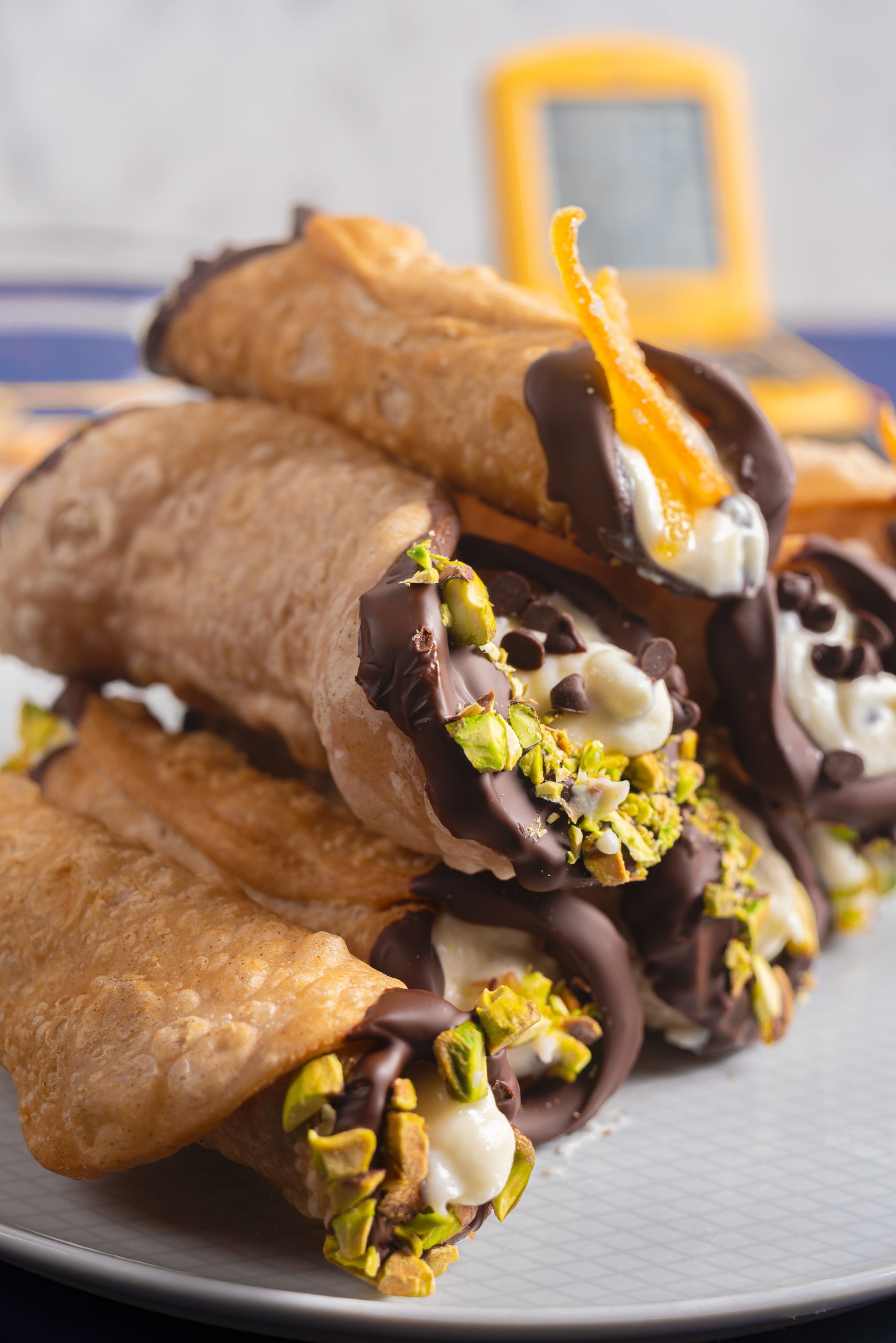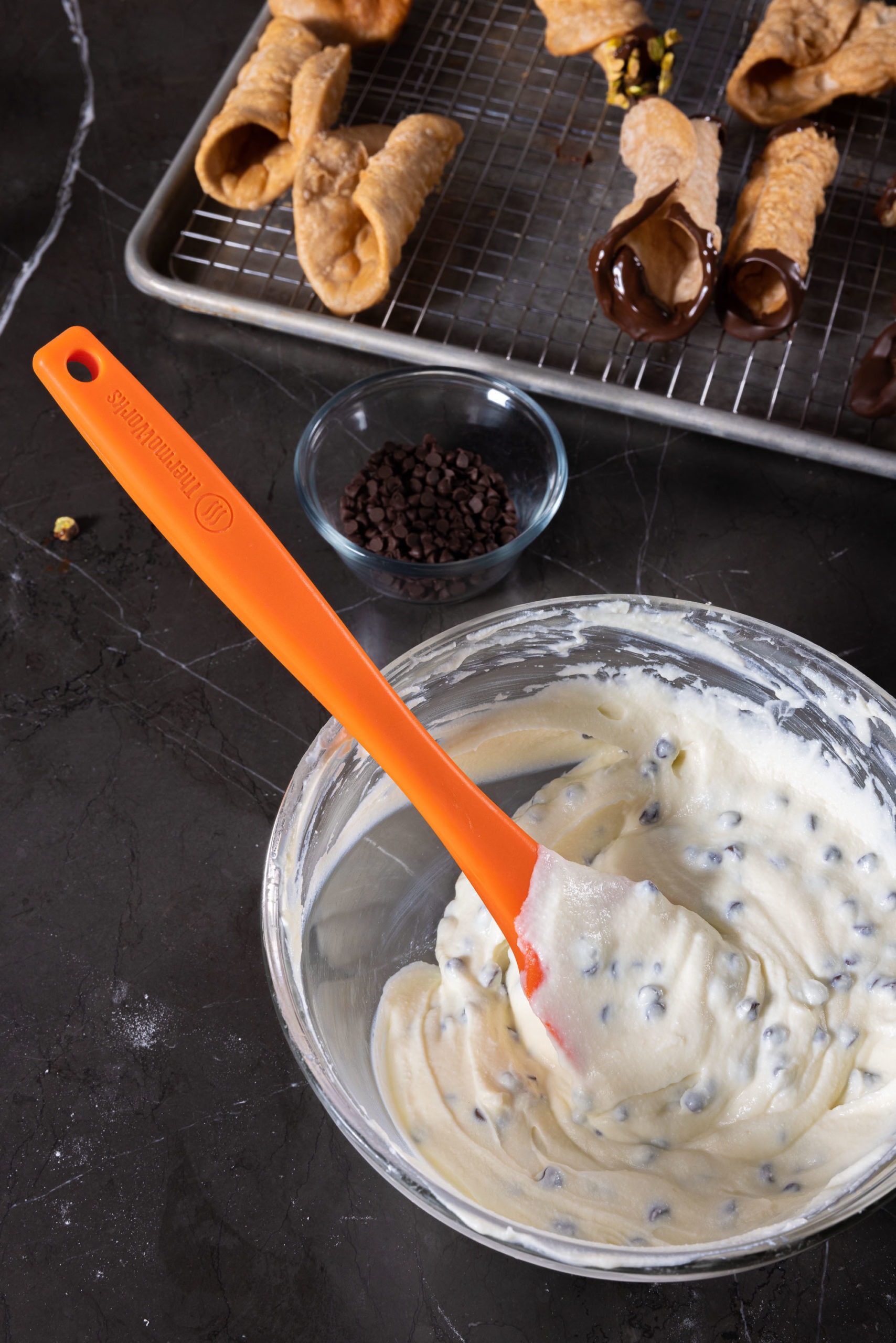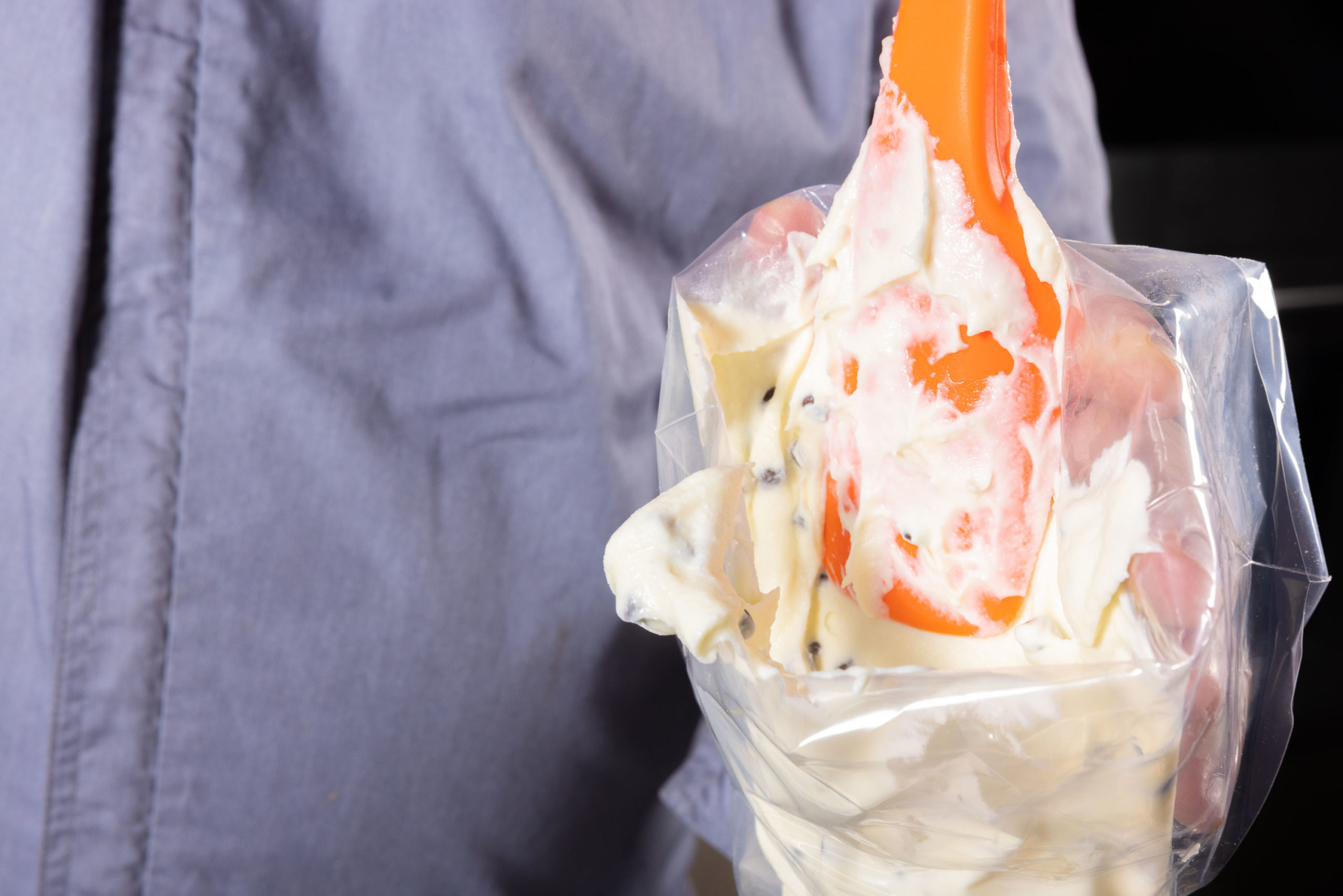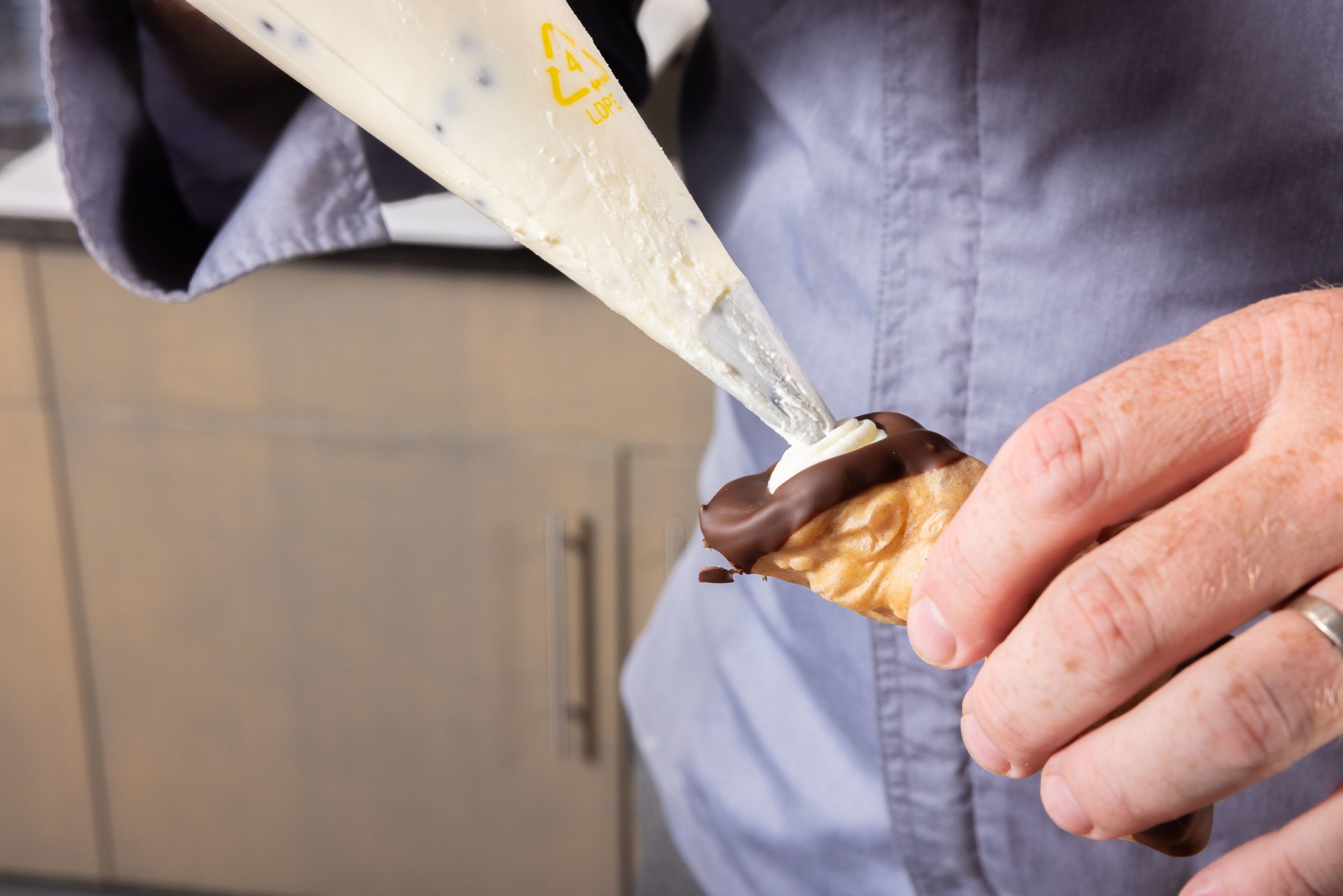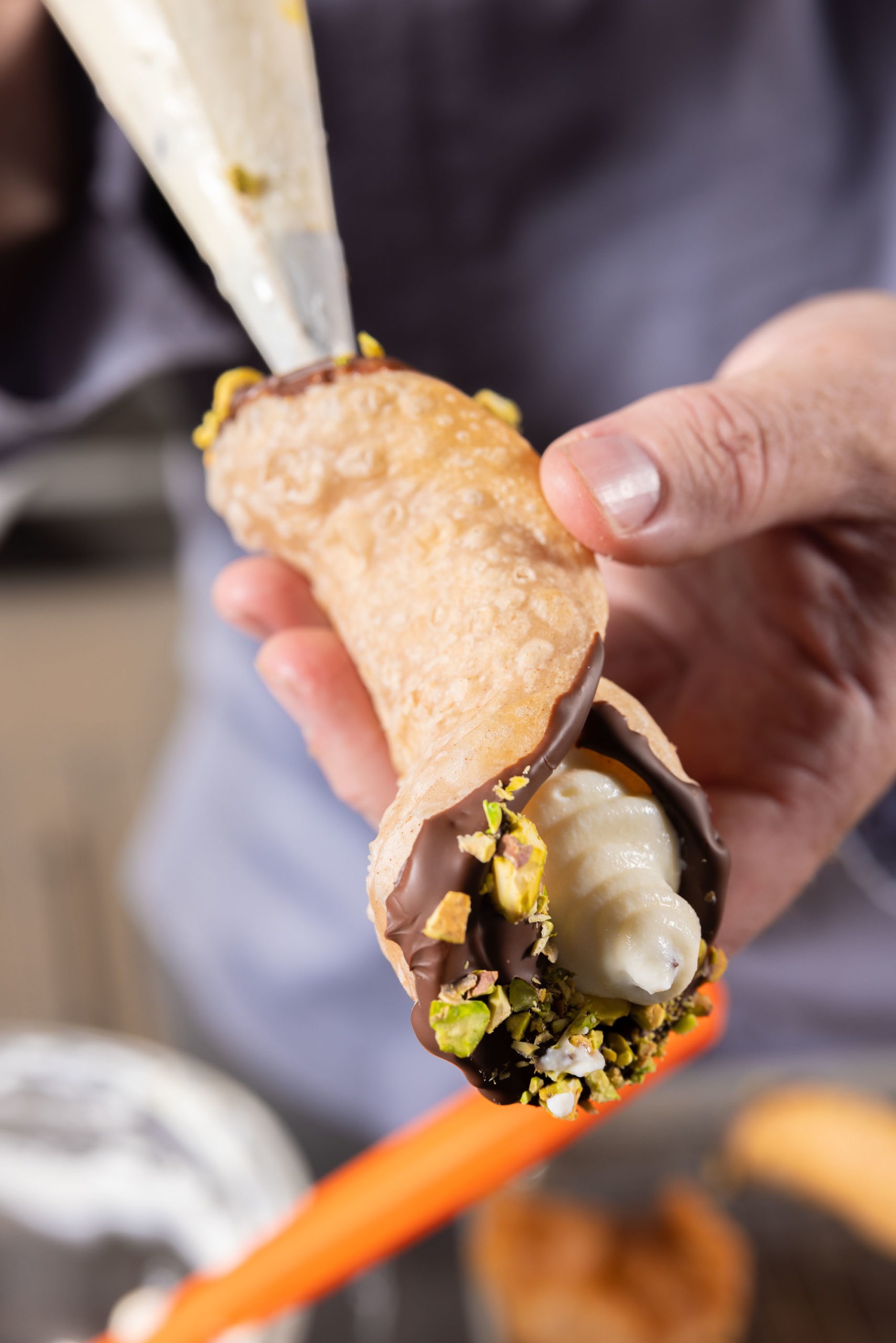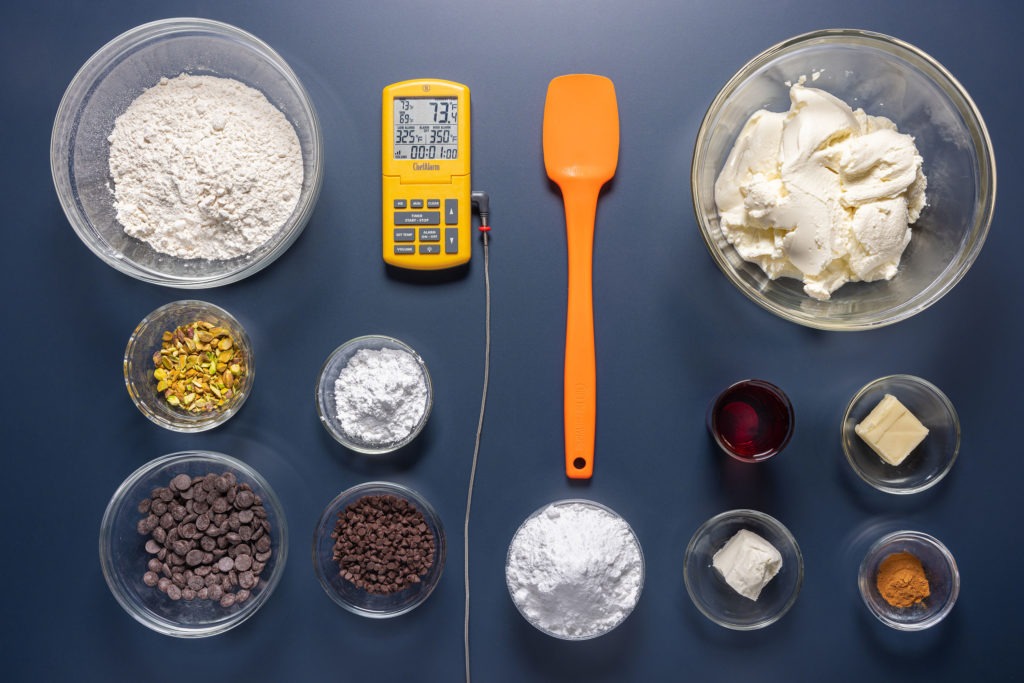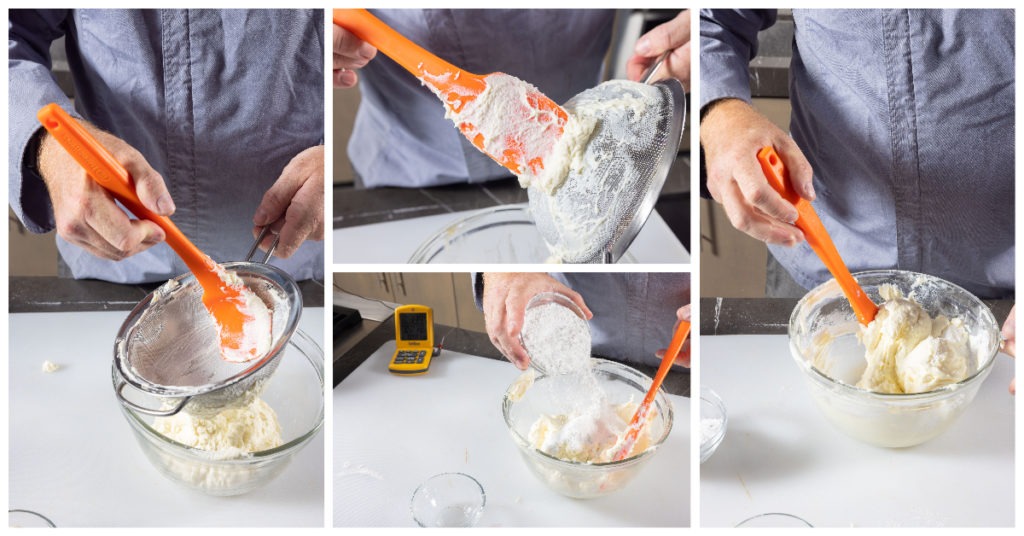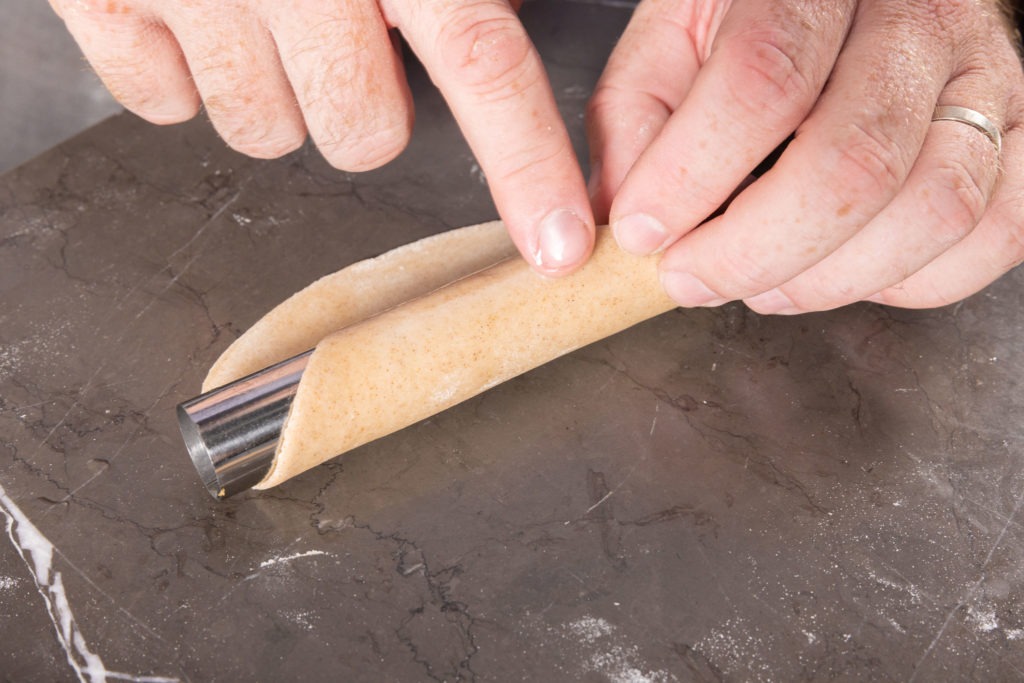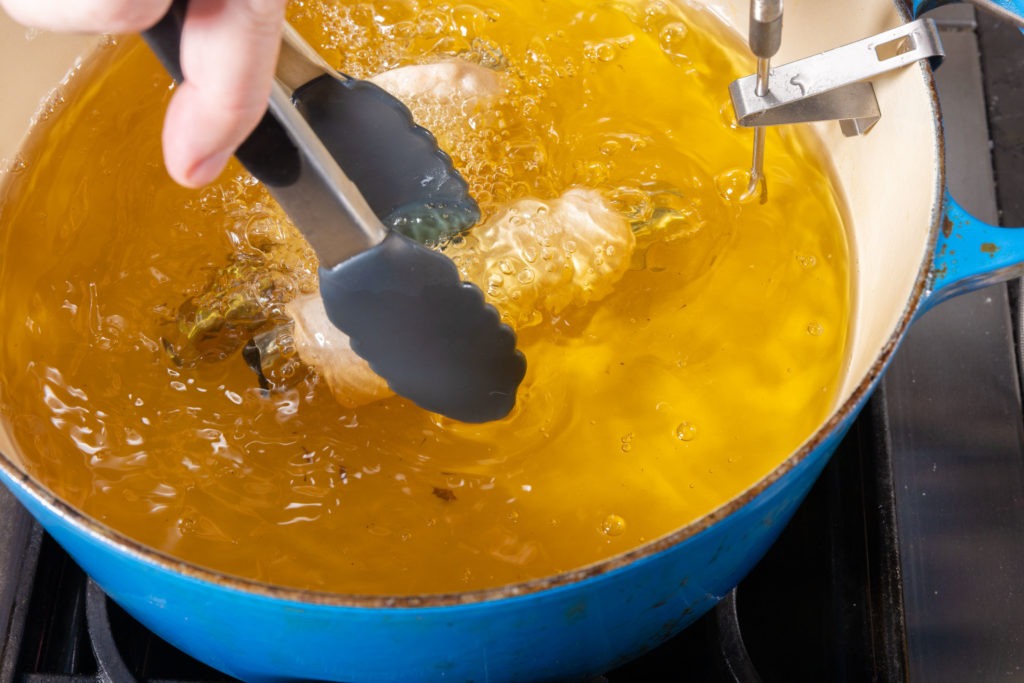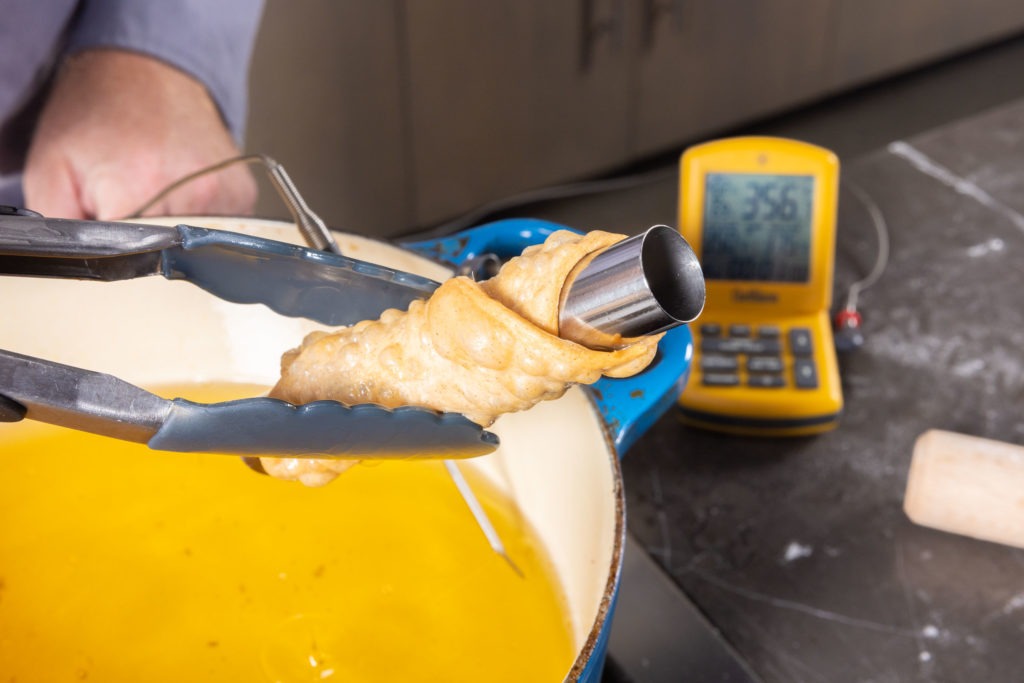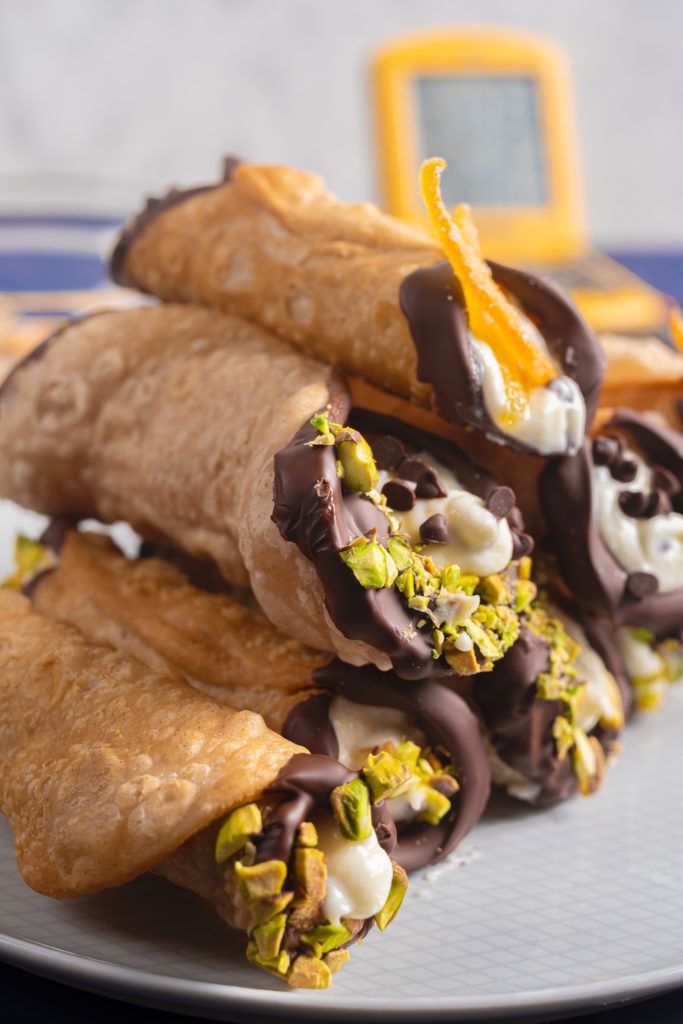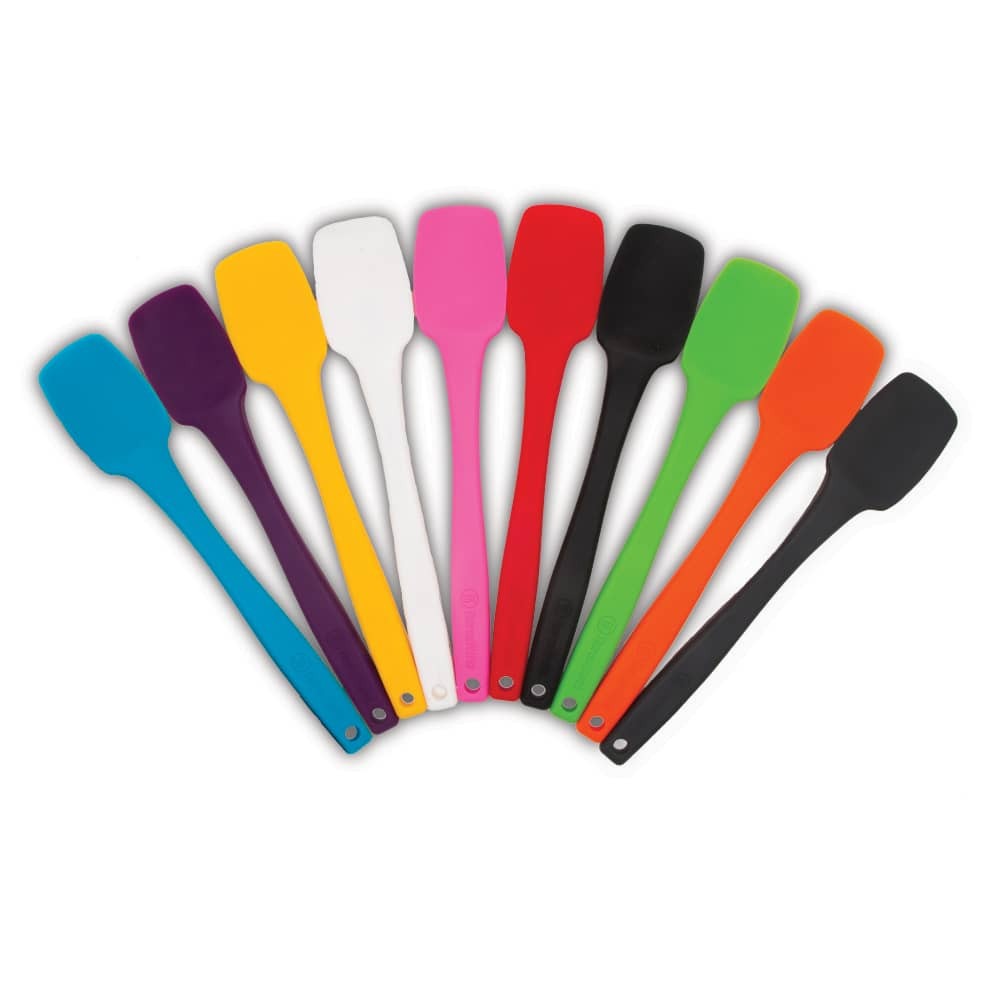Homemade Cannoli: Recipe and Frying Temps for a Delicious Dessert
Good cannoli can be hard to find. Unless you live in a city with a substantial Italian population, cannoli might not even be available, let alone good. But that just isn’t acceptable. Everyone should be able to enjoy great cannoli!
Here, we present a recipe for fantastic cannoli with crisp, flavorful shells and beautifully simple, rich cream. Plus, we have some thermal advice on cooking cannoli correctly—you shouldn’t be eyeballing your fry oil temperature. Let’s get into it and find out how to make these pastries.

Cannoli shells: tips and critical temps
The wonder of cannoli is the way the crisp, bubbly shell interacts with the smooth, creamy filling. That texture, that feel in the hand, it’s all part of a good cannoli. But so is the taste! Cinnamon is not uncommon in many cannoli recipes, but even more important is wine. Cannoli shells are made with wine as part—or in this case, all—of the liquid.
Originally, wine served to flavor the shells. Now, though, we know that by using a liquid that is part alcohol, we develop less gluten during the mixing process, making it easier to roll the dough out. But even more, the alcohol in the wine cooks out even more quickly than the water does, creating alcohol steam and bubbling that crust more quickly.
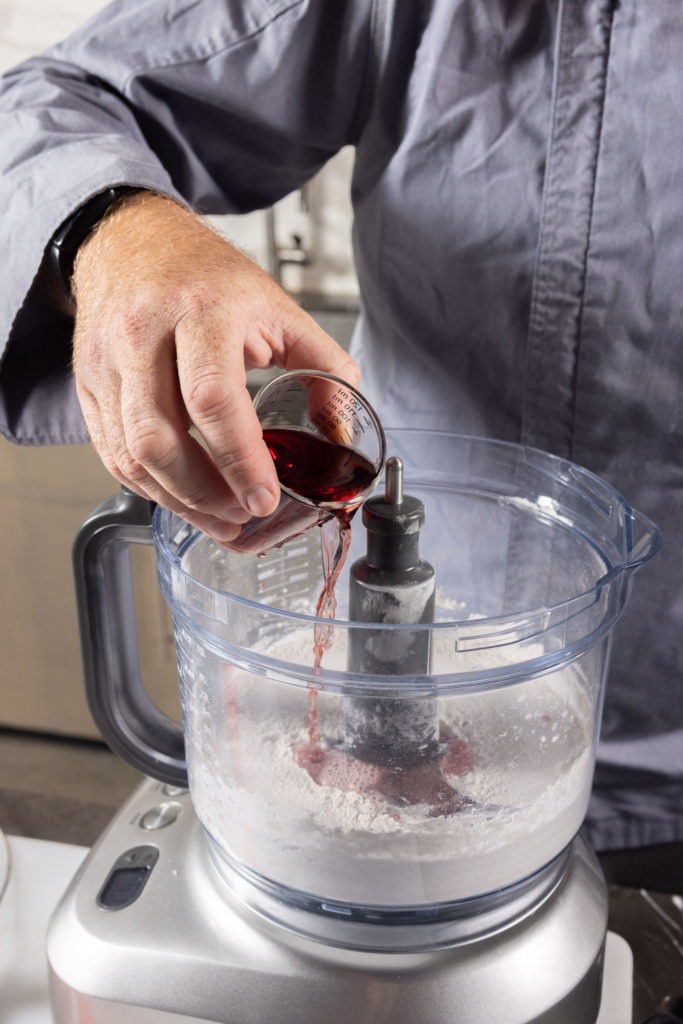
So that’s the flavor, but what about the crisp and bubbliness? Well, that takes some thermal thinking.
Cannoli shell thickness
Crisp shells need to have the water cooked well out of them, and a bubbly texture comes from the creation of steam in the dough. To accomplish both of these feats, we need to roll the dough out thin. Like, 1/16 of an inch thin. Thicker dough rounds will not so much get bubbles on the surface as inflate like a pita, ripping their seam and flying free from the cannoli form. If you don’t roll your dough thin enough, you’ll end up with a delicious, crisp donut-y thing, but you won’t have a cannoli shell.
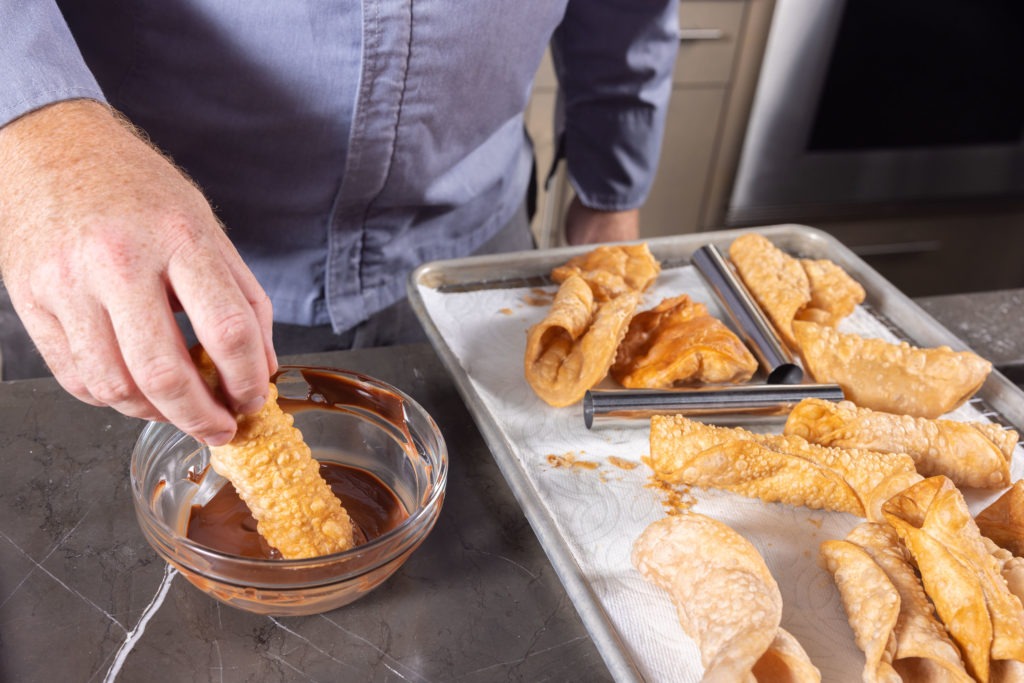
Creating the little steam bubble is obviously indicative of water being cooked out, but here thinness matters, too. If the dough is too thick, we can end up with a shell that is crisp on the outside, but still moist inside. That may sound great—crispy chewy!—but in the end, it will just lead to a vague-textured shell as the water redistributes through the pastry.
Cannoli fry-oil temperatures
The next thing to think about is the oil temperature. Oil that is too cool will cook the dough in place without bubbling it up. It results in a shell that is crunchy and hard, not crispy and light. Oil that is too hot can burn your shells, but it can also create too much steam too quickly and puff up the shells in a bad way.
We found that oil (most traditional recipes use lard) at about 350°F (177°C) strikes a great balance. Use your ChefAlarm® to track the temperature as you cook, trying to maintain a window within a few degrees of that target temp. Checking oil temps by “dropping in a crumb to see if it sizzles” does not give you an accurate idea of the temperature!
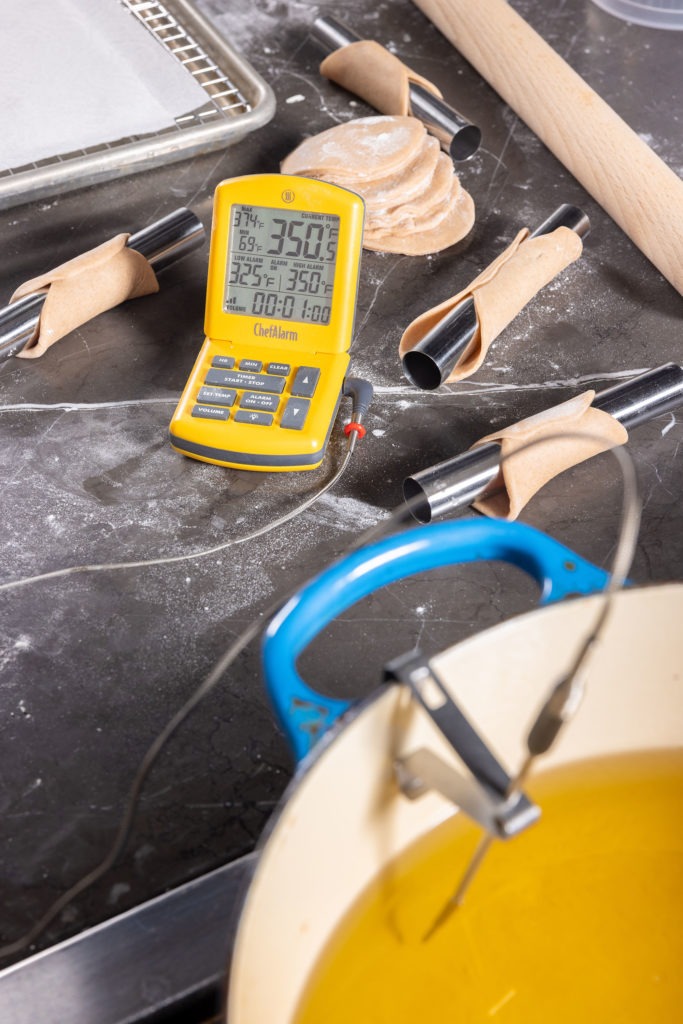
How to make cannoli filling
Cannoli filling is traditionally made of sweetened ricotta. You can find versions that use a custard/pastry cream, and those are plenty tasty, but there is a lightness, a simplicity that borders on purity in a simple, sweet ricotta filling. Many Sicilian recipes call for sheep-milk ricotta, but, shocker, that can be hard to come by in the States.
By all means, if you have access to some fresh sheep milk, make your own ricotta for this! If not, use cow-milk ricotta that has been spiked with a little bit of goat cheese (chevre). It adds just enough zing to wake the flavors without being noticeably goaty.
Once you’ve secured your ricotta, whatever its origin, it’s best to drain it. Give it a stir to break up the structure a bit and plop it into a strainer over a bowl. Leave it for a few hours, or overnight in the fridge, before you strain and sweeten it. And yes, it should be strained. Press it through a sieve or strainer with a silicone spoonula to ensure optimal smoothness.
To sweeten the ricotta, superfine sugar is best. It dissolves more easily and quickly, so you’re less likely to oversweeten. If you want to add a tiny drizzle of honey, that’d be delicious.
To top off the filling, mini chocolate chips are stirred in right before it is put in the shells.
Just because you don’t live near a major urban center with a rich history of Italian-American culture doesn’t mean that you can’t have amazing cannoli. With these temperature tips and this recipe, you’ll make cannoli that will make you feel like you’re sitting on a sunny piazza in Sicily, soaking up the scenery. Make them for your next party, or, even better, for yourself this weekend. You’ll be glad you did, as will anyone lucky enough to get one from you.
Print
Homemade Cannoli Recipe
- Yield: about 10–12 pieces 1x
Description
Adapted from recipes by Binging with Babish and Bon Appétit.
Ingredients
For the shells:
- 250 g flour
- 30 g powdered sugar
- 3 oz (90 ml) white wine
- 1 oz (30 ml) red wine
- 2 Tbsp butter
For the filling:
- 24 oz whole milk ricotta, drained for a few hours or overnight (see note)
- 2 oz fresh goat’s cheese (chevre)
- 1 C superfine sugar (see note)
- Heavy pinch of kosher salt
- ~3/4 C mini semisweet chocolate chips
For frying:
- 1 egg white, whisked with a tablespoon of water
- High smoke-point oil (tradition calls for lard; we used a combination of lard and corn oil and it was great) to fill a pot with about 3″ of oil.
For garnish: chocolate for melting, chopped pistachios, candied orange peel, whatever else you want
Special tools: Cannoli forms, a 4″ round cutter
Instructions
Make the dough for the shells
- Pulse together the flour, powdered sugar, and cinnamon in a food processor.
- Add half the wine and pulse until sandy.
- Add the butter and pulse again a few times.
- Add the rest of the wine and run the processor until the dough just comes together in a ball.
- Turn the dough out onto the counter and knead it 2–3 times. Put it in a bag and place it in the refrigerator to chill and rest for at least 30 minutes.
Make the filling
- Soften the goat cheese by mashing it a bit with a rolling pin (or kneading it in your hands).
- Place the ricotta and chevre in a fine sieve or strainer and press it through with a silicone spoonula, scraping it from the bottom of the sieve into a bowl. Add the salt.
- Add the sugar 1/4 C at a time, tasting between additions. Adding too much sugar will make the filling too runny, so only add as much as you need.
- Keep the chocolate chips in reserve until right before filling.
- Place in the refrigerator to chill until ready to use.
Fry the shells
- Start heating the oil in a large, heavy-bottomed pot. Use a ChefAlarm and a pot clip to monitor the oil temperature, setting a high-temp alarm for 350°F (177°C) and a low-temp alarm for 325°F (163°C).
- Roll the dough out on a lightly-floured counter until it is very thin—about 1/16″.
- Cut the dough into rounds. Gather the scraps, reroll and cut into another round or two.
- Place a cannoli form at one edge of a dough round, and roll towards the other edge, dipping a finger in the egg white/water mix and wetting the dough where it will join.
- Press the joint down tight, rolling it a little bit with the cannoli form.
- Drop a few cannoli into the hot oil, being very careful of splashes, and cook for 2–4 minutes.
- When the cannoli are bubbly, golden brown, and floating, remove them to a wire rack to drain.
- Be careful of the cannoli-form tube being filled with oil! pour it out into the pot again before moving it to the rack to cool. It is easy to burn yourself with that cascade of hot oil.
- As soon as the forms are cool enough to remove from the cannoli, remove them and continue to cook the rest of the rounds in batches.
Stuff the cannoli
- If dipping the ends of the cannoli in chocolate, melt the chocolate and dip them. Dip the chocolate in nuts, if desired. Place them in the fridge to harden for a few minutes.
- Once the cannoli shells are all cooked, prepare the filling by stirring in the chocolate chips until it is as chunky as you want it to be. 1/4–1/2 C should do.
- Put the filling into a pastry bag with a 1/4–1/2″ opening.
- Pipe the filling into the cannoli from each end, inserting the tip into the pastry and filling as you pull the bag slowly towards the opening.
- Top the cream with more mini chocolate chips, chopped nuts, candied orange peel, etc.
- Serve!
Notes
Superfine sugar can be hard to find. If you can’t source it, put a cup of sugar in a good blender and blitz it at high speed for a few seconds.
Stirring the ricotta before draining it will help it drop excess liquid. If you don’t have time to strain the ricotta, you can proceed, you’ll just end up with a less-firm filling.
It is best to eat them as close to their preparation as possible if you want a crisp shell. Refrigerating stuffed cannoli will soften the pastry. You can prepare the shell and the filling in advance by a day and fill right before service.
Shop now for products used in this post:


